Researchers at FCH BUT are pioneering future materials: A conductive hydrogel connects biology and electronics
The human body is composed mostly of water – our cells, organs, and tissues function in an aqueous environment. When an artificial material is introduced into this environment, for example during implantation, it is crucial that it be as compatible as possible. This is precisely the goal of research into conductive hydrogels, which combine the ability to conduct electricity with the ability to mimic the mechanical properties of living tissue. Doctoral student Romana Malečková from the Materials Research Centre at the Faculty of Chemistry, Brno University of Technology (FCH BUT), is focusing her dissertation, under the supervision of Professor Weiter, on research that sounds like science fiction but has the potential to fundamentally transform medicine.
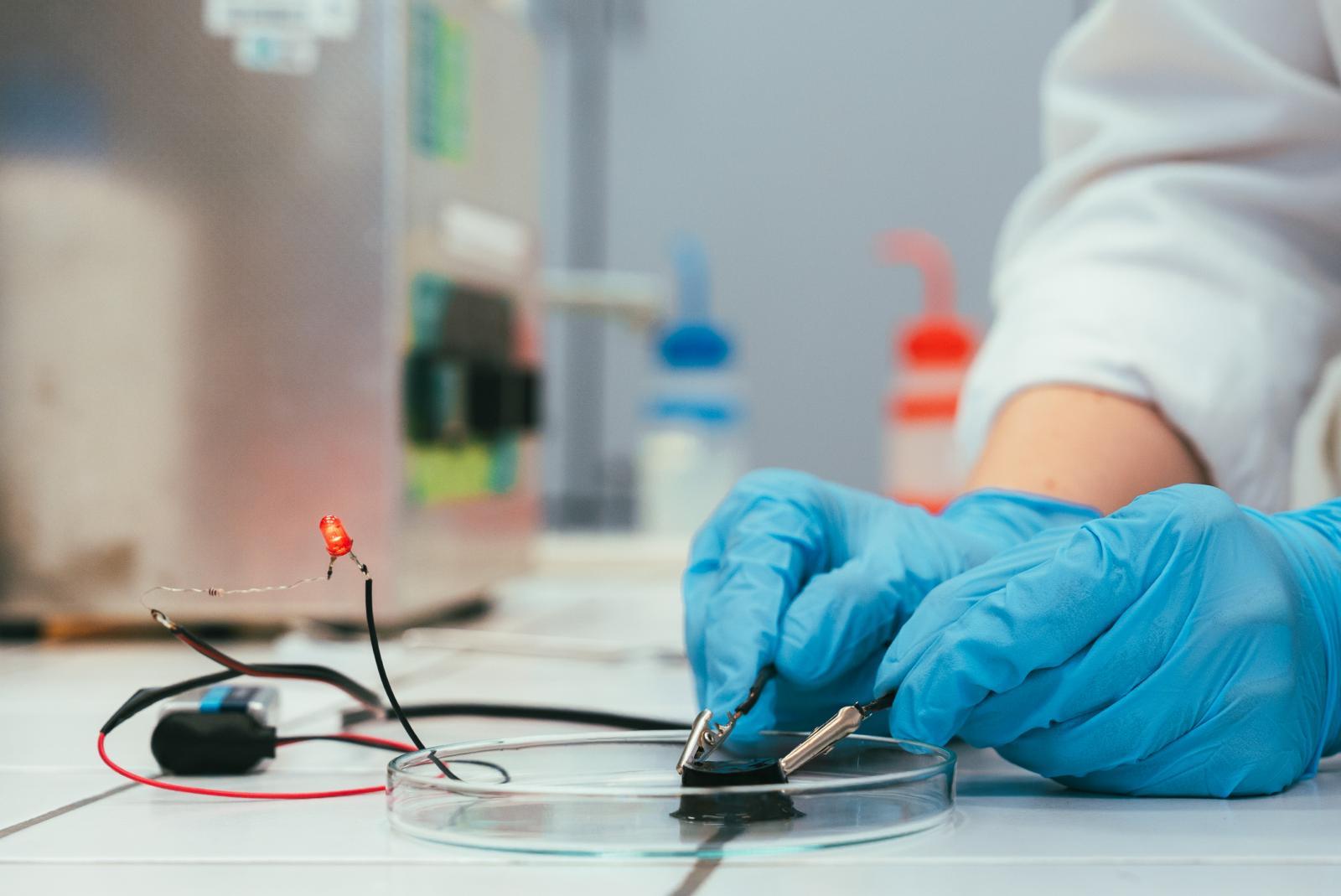
Imagine connecting a battery and an LED to children’s jelly – and it lights up. This is the real foundation behind research into conductive hydrogels. Hydrogels are substances made up of a three-dimensional polymer network that can retain large amounts of water – up to 90% or more, similar to human tissue. If conductive polymers are used instead of regular ones, a conductive hydrogel can be created.
The human body is an extremely dynamic environment – full of water, movement, and natural ionic processes. In contrast, electronics are based on solid, dry, and rigid materials. The difference in mechanical properties between these two worlds is vast – like sticking a fork into jelly. This contact between living tissue and lifeless technology is often problematic. However, hydrogel offers a unique solution. Thanks to its softness, high water content, and the ability to conduct both ions and electrons, it creates an ideal interface between cells and devices. It can thus mediate effective communication between biological structures and electronic devices.
Researcher Romana Malečková has been dedicated to studying organic conductive materials for years, with conductive hydrogel becoming her main focus. Her interest in this field began with her bachelor’s and master’s theses, which involved so-called organic conductive materials. Unlike conventional metals, these have a carbon backbone, are conductive, and are more compatible with the human body. “Even though we were able to create relatively flexible thin layers, they still didn’t mechanically match the softness of tissue. Hydrogels, on the other hand, are much closer to living tissue in their properties,” she explains.
The potential of this approach is huge, she says: “With a conventional implant made of inorganic metal, the body will eventually form scar tissue around it to protect itself from repeated mechanical damage. This, however, impairs the implant’s function – signals pass through scar tissue with difficulty, reducing the efficiency of information transfer and the device itself. Or undesirable immune responses may occur. But when we use a material that is both soft and conductive, the body accepts it more easily. Bioelectronics made from hydrogel can therefore be more efficient and gentler.”
Her article, which became the cover story in the prestigious journal Material Advances, confirmed the importance of her work and brought recognition not only within her team but also from the broader scientific community. “It was my first first-author paper, and I was honestly nervous about how it would be received. But it went great. It’s an encouragement and a confirmation that this research direction makes sense and that we should keep going,” she summarizes. 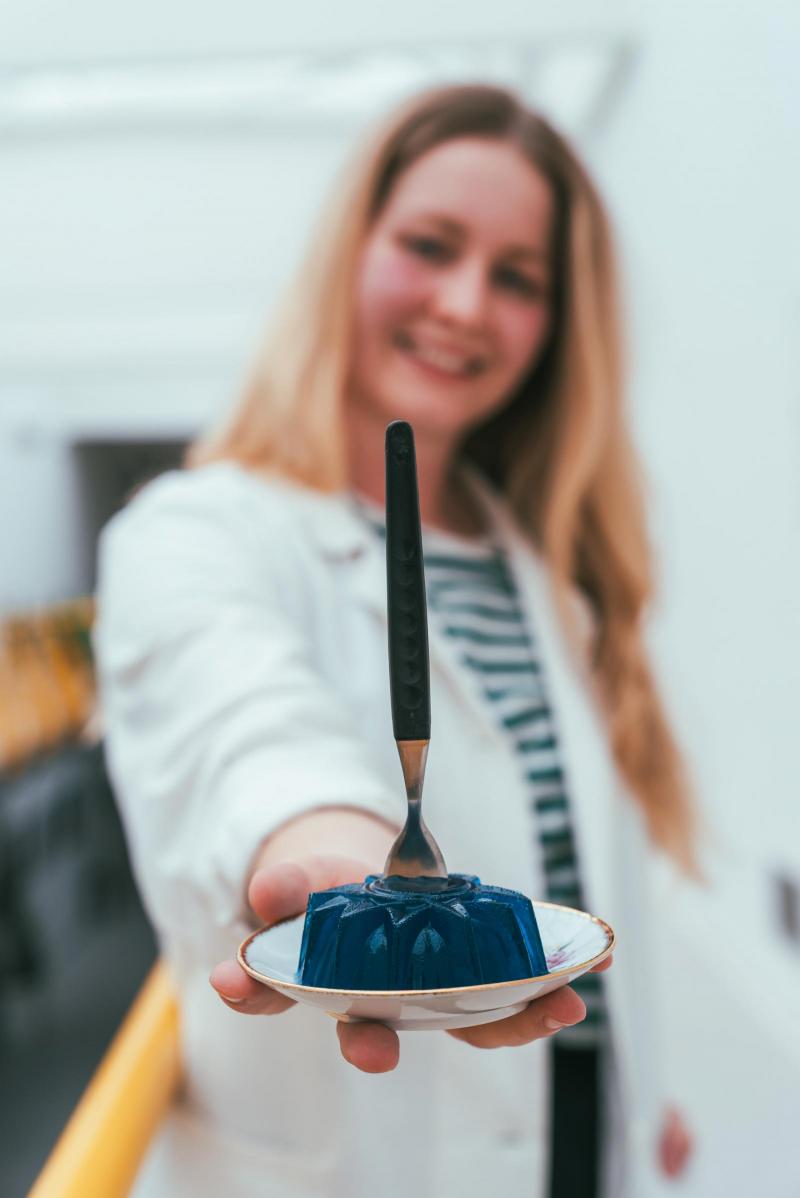
Breakthrough material PEDOT:DBSA
Romana Malečková is working with a material called PEDOT:DBSA in her research. This conductive polymer emerged as an alternative to the commonly used PEDOT:PSS, long considered the gold standard in organic bioelectronics – both in thin-film and hydrogel applications. “It’s stable in terms of temperature and chemical composition, easy to work with, forms aqueous dispersions, and is considered biocompatible. But recently, it’s becoming clear that its biocompatibility isn’t as strong as once thought, especially for long-term applications,” she explains. Researchers found that its stability in aqueous environments – like the human body – is not ideal.
Choosing PEDOT:DBSA brought additional advantages. Other teams tried replacing the counterions in PEDOT with natural molecules, such as polysaccharides like hyaluronan or ulvan. While this improved biocompatibility, it significantly reduced conductivity due to the size of the molecules. In contrast, DBSA is a relatively small molecule and doesn’t interfere much with the material’s electronic properties, allowing the necessary conductivity to be maintained.
Another key benefit is the simplicity of preparation. High temperatures or complex chemical processes aren’t required. The material forms spontaneously at room temperature by adding a small amount of DBSA to the polymer. This significantly reduces both energy and cost requirements, which is a major step toward practical use. Moreover, DBSA is a commonly used surfactant – for example, in shampoos. This approach not only simplifies manufacturing but also enables use in sensitive applications where cells need to be present during fabrication. “Because we don’t use high temperatures, that would be possible,” she adds. 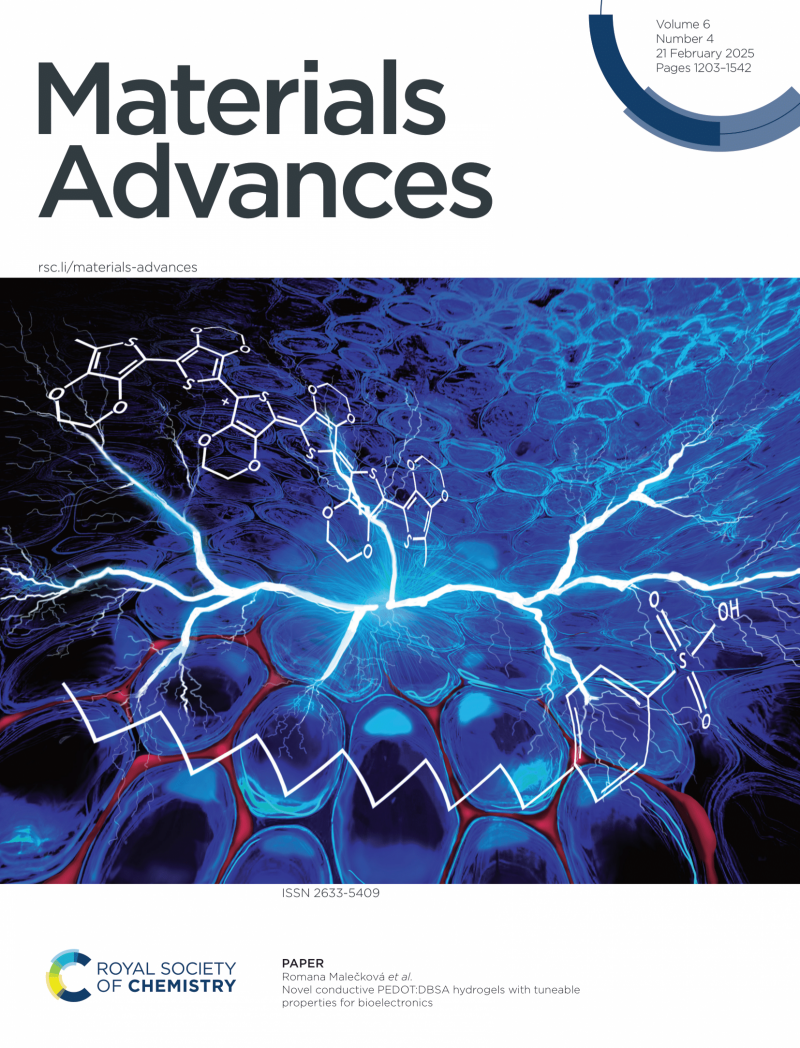
Softness as the key to biocompatibility
Softness is crucial for hydrogels. While common metals have a Young’s modulus (a measure of a material’s elasticity) in the gigapascal range, human tissues range from 0.1 to 100 kilopascals. When mechanical properties differ this much, the body reacts to foreign materials. The softness and adaptability of hydrogel help prevent this reaction.
The mechanical properties of the hydrogel can be easily adjusted by changing the amount of surfactant added to the polymer, which creates a cross-linked hydrogel network. A typical concentration is around 5%, but even small changes significantly affect the gel’s mechanical properties. This allows the material to be tailored to different tissue types – some are stiffer, others softer – and thus be customized for specific applications in the body.
In addition to mechanical properties, conductivity is also essential for hydrogel use in the body. “Impedance is the natural resistance of tissues to electric current and varies depending on the frequency at which the current is applied,” explains Romana Malečková. “Low frequencies, for example around 1 Hz, are important for some types of stimulation, as they correspond to the natural electrical activity of cells, like neurons.” Low impedance at these frequencies is therefore key, especially for applications involving tissue stimulation. “We’re glad we managed to design the hydrogel in such a way that it has very low impedance compared to conventional hydrogels, which contain non-conductive gel networks like agarose or gelatin in addition to the conductive component. That’s a major advantage for future applications,” she adds. 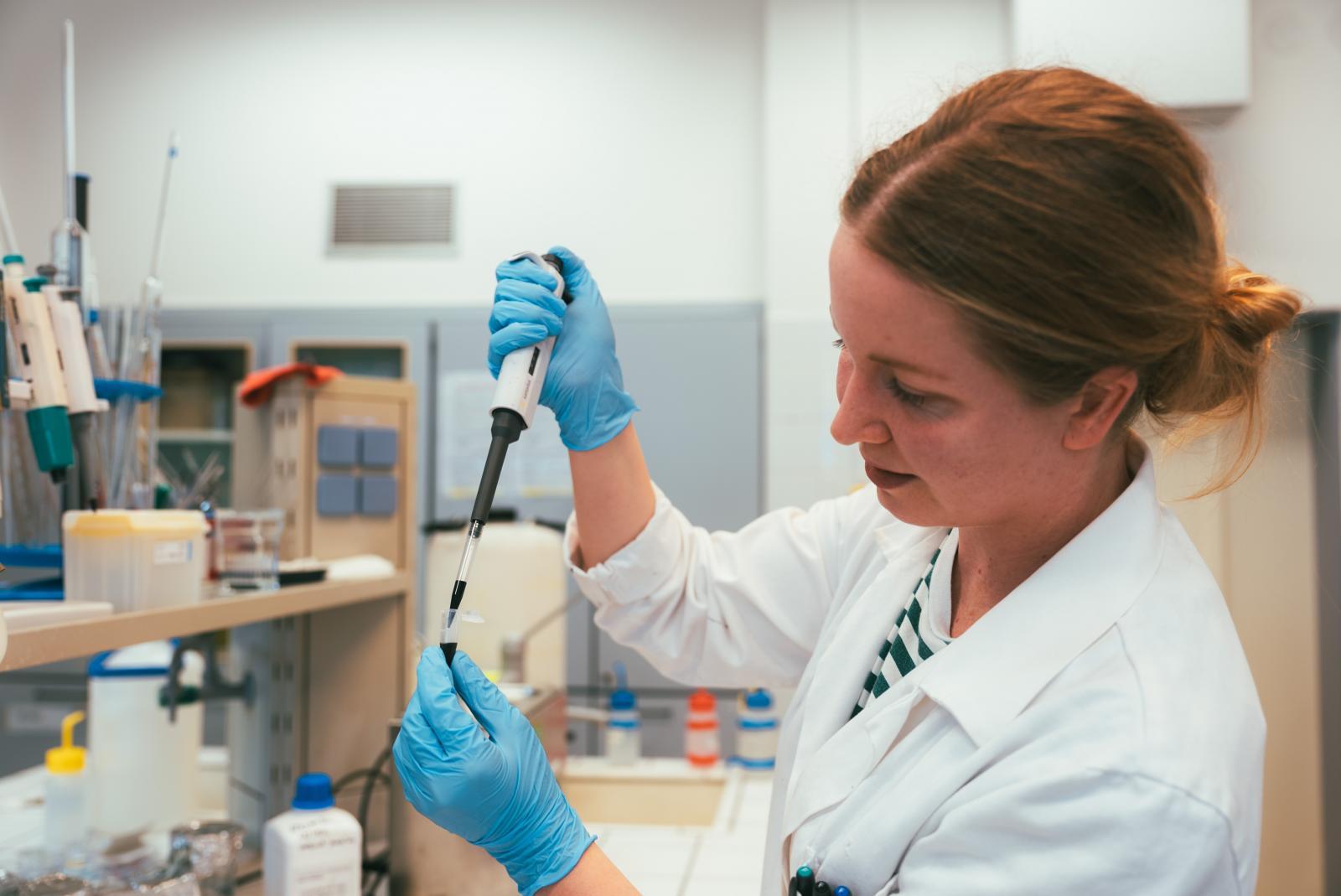
Collaboration across disciplines
The development of conductive hydrogels is truly a team effort. Experts from various fields collaborate on the research – from materials scientists and hydrogel specialists to physicists and electrochemists. “Hydrogels were completely new to us when we started,” admits the doctoral student. That’s why the team closely collaborated with Dr. Smilka’s group, who specialize in hydrogels. They provided valuable advice regarding the mechanical properties of materials and methods for characterizing them.
The field of electrical measurements was particularly challenging. “We didn’t find a clear method in the literature. Often, hydrogels are dried before measurement, which significantly alters their properties,” she explains. This challenge was solved with the help of Prof. Hubálek’s group at CEITEC BUT, who assisted in setting up measurements directly in the hydrated state. Biocompatibility was verified in collaboration with the Institute of Biophysics of the Czech Academy of Sciences.
One of the toughest phases was finding a way to electrically measure the hydrogel. “It was really frustrating because we had nothing to go on,” the scientist admits. Then came the COVID pandemic, which temporarily halted the research. But the need to find their own solutions is one of the process’s greatest contributions, and discovering the unknown is what she enjoys most about science. “It’s like a detective story. You try new approaches, look for answers, uncover hidden connections. It’s sometimes tough, but most of the time it doesn’t even feel like work,” she says with a smile. She remembers how, as a child, she thought work was something people had to do just to make a living. Now she’s lucky enough to do something that truly fulfills her.
She draws great inspiration from her colleagues in the Organic Electronics and Photonics research group. “Each of us focuses on a slightly different corner of materials science, and we’re working on quite different applications – but they’re all united by the same physical principles. They’re all talented scientists I’m constantly learning from – how to push my research forward and how to do excellent science. Most importantly, they’re also great people I respect deeply, and with whom research is never boring,” says Romana Malečková.
Research into conductive hydrogels is still rare in the Czech Republic – the group at BUT is currently the only one of its kind. “My colleague Šárka Tumová is the one I collaborate with most on this. It’s our shared baby,” she adds with a smile. 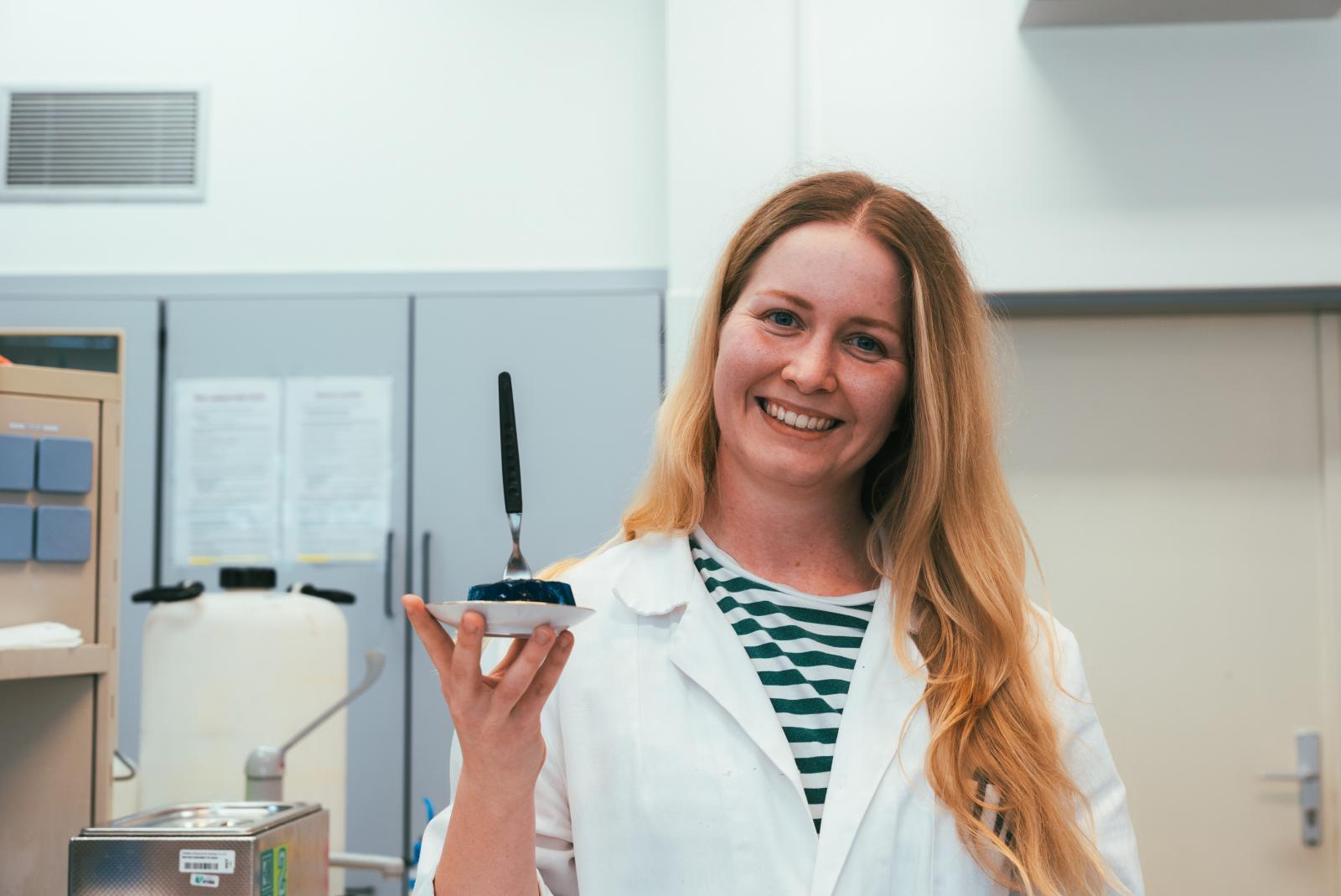
From lab to patient
Conductive hydrogels based on PEDOT are still a relatively new topic, but development has rapidly accelerated in recent years. A new generation of bioelectronic materials is emerging right now – the variety of hydrogels is growing, and their understanding and practical use are improving. Romana Malečková estimates that practical applications could be possible within 5 to 10 years, depending on the pace of clinical testing. The most likely application is in medical devices.
The high softness of the new hydrogel currently prevents its implantation deep into the body, but it opens possibilities in regenerative medicine. For large or poorly healing wounds, it could serve as an active wound dressing that enables targeted stimulation of cells to regenerate. Another benefit is the ability to mix growth factors, antibiotics, or other healing-supporting substances directly into the hydrogel. Its high water content keeps the environment moist, which supports faster and more effective healing. Compared to current wet healing methods, this material also adds electrostimulation.
In the future, the hydrogel could also function as part of sensors that monitor specific chemical substances in the patient's body – such as in sweat, blood, or other bodily fluids. This type of targeted monitoring is a typical example of personalized medicine. Sensors based on hydrogel can adapt to a specific person and their needs, offering more effective care and prevention.
To young people considering a scientific career, especially in bioelectronics, Romana Malečková recommends not being afraid of interdisciplinary challenges. “It’s a field that’s getting a lot of investment, especially due to the aging population and the rise of lifestyle-related diseases. Bioelectronics can offer solutions, but it’s a long-term commitment,” she explains. She sees collaboration and openness to multiple disciplines – from materials science and physics to electrochemistry and biology – as key.
In her view, bioelectronics is a field with enormous potential. “There’s still so much to discover, and it makes deep sense. This research has an impact on humanity’s future – and that’s a strong motivation,” she concludes.
-jo-
| Published | |
|---|---|
| Link | https://www.fch.vut.cz/en//f96620/d292013 |